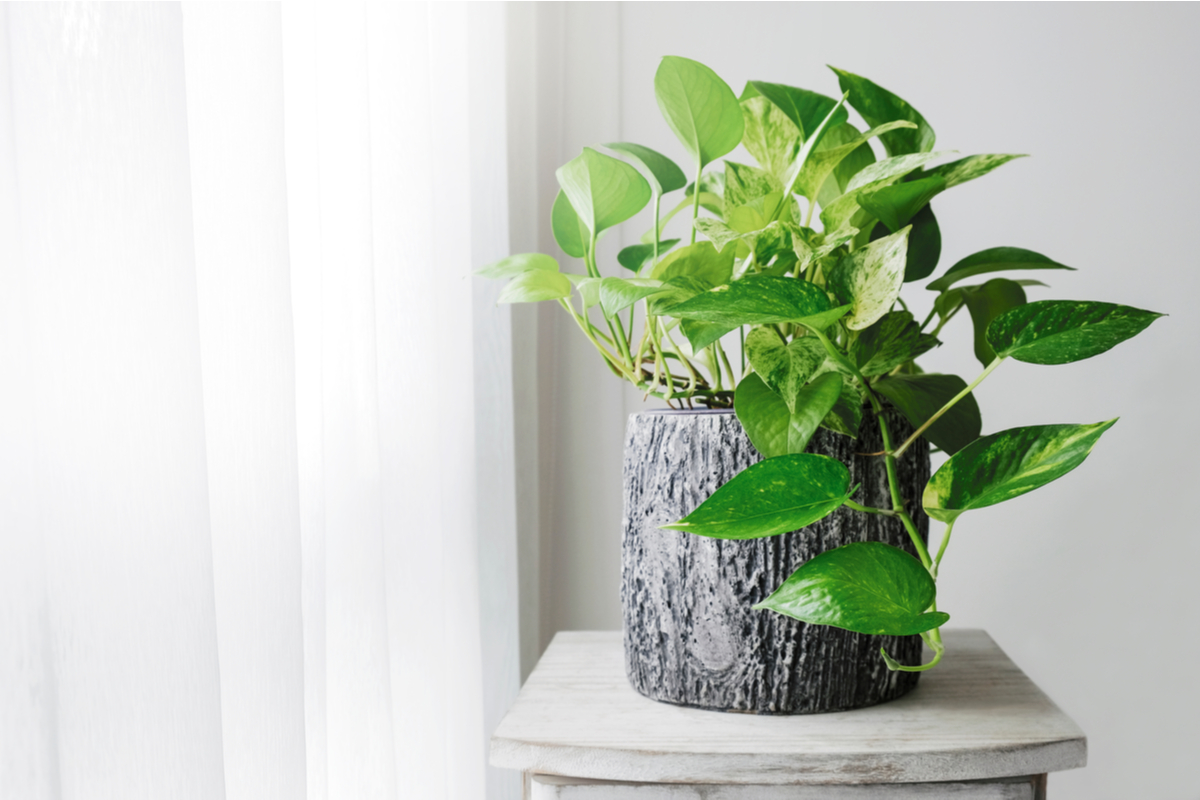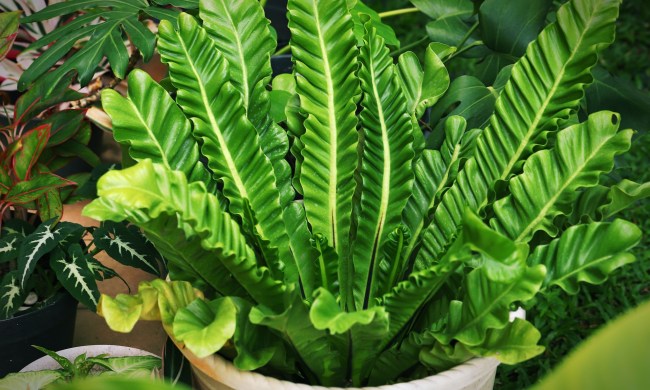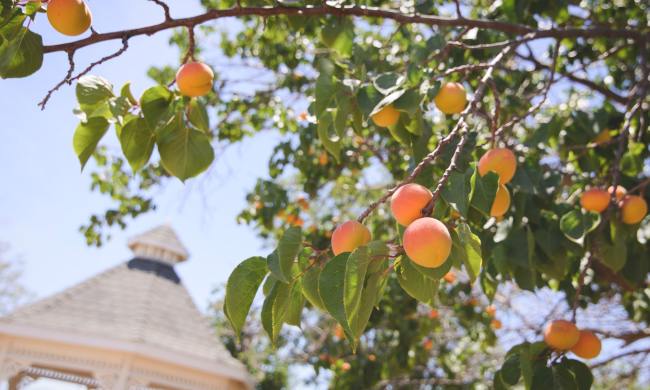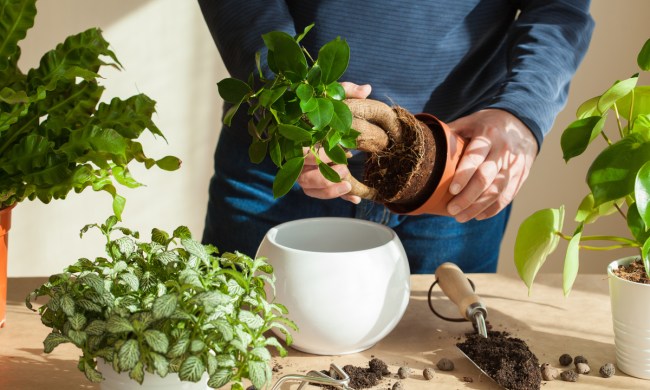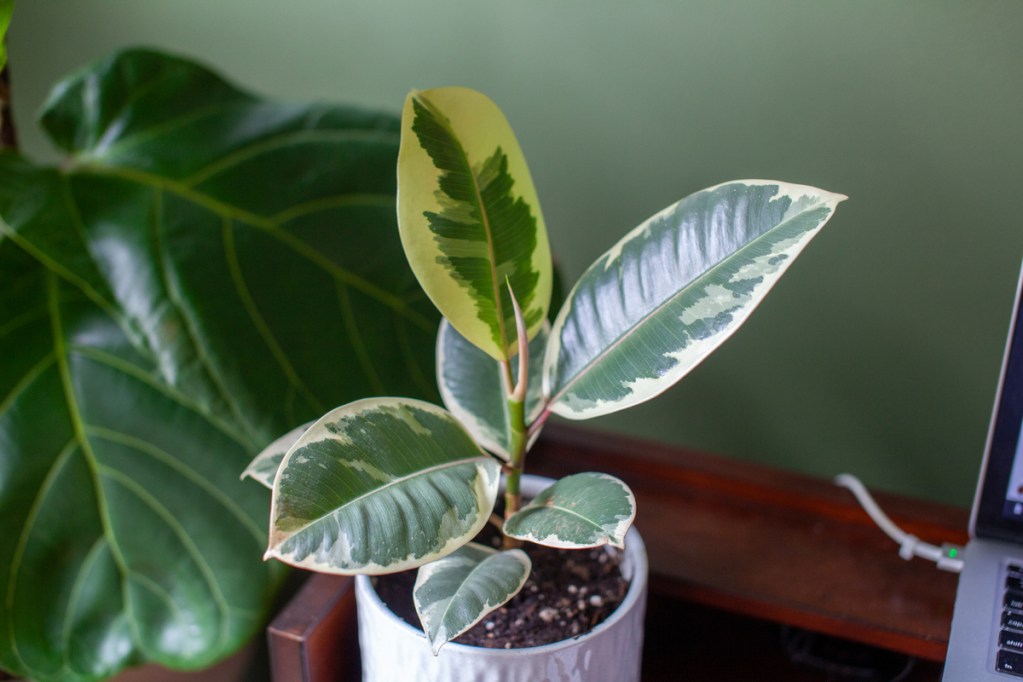
Succulents might get all the buzz for being low-maintenance plants, but don’t count out tropical plants. Beloved for their lush leaves and beautiful variegation, tropical houseplants have a reputation for being finicky. While it’s true that some require extra humidity and water, many are beginner friendly. Tropical plant care can actually be incredibly simple, especially if you start with one of these 6 tropical houseplants! No matter what experience level, personal taste, or budget, one of these tropical houseplants is sure to be a good fit for you.
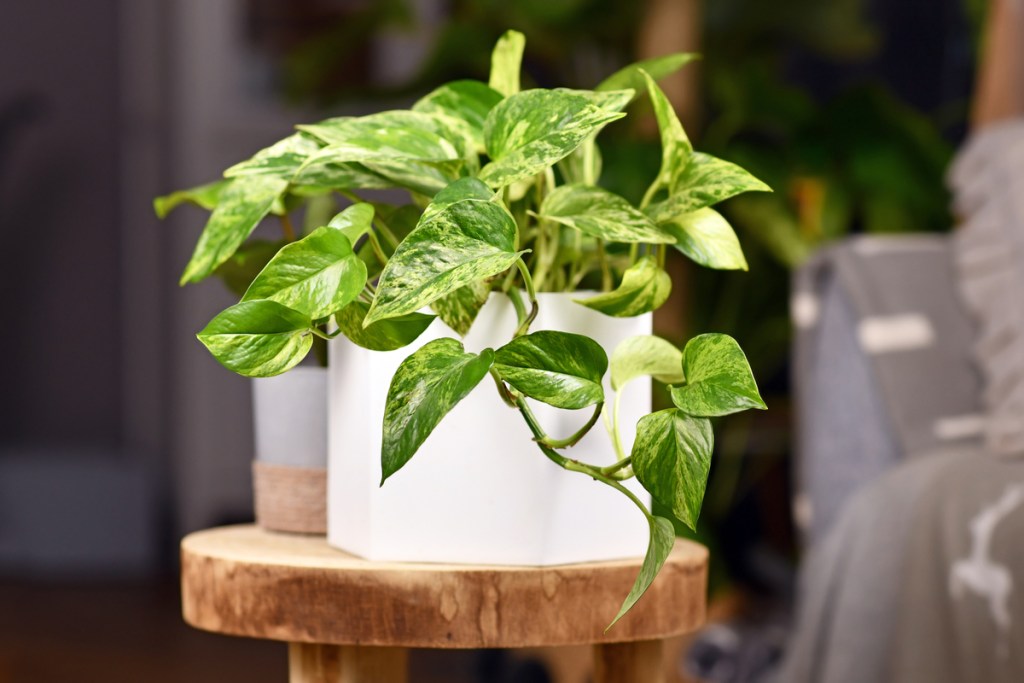
Basics of tropical plant care
Many houseplants come from tropical regions all over the world. In nature, they usually grow beneath tree canopies in warm, humid environments. Because of how they naturally grow, these plants appreciate bright indirect light indoors or partial shade outside. Natural light will do, but grow lights can also supplement their needs. As long as the temperature is comfortable for you, it should be sufficient for a tropical plant. When it rains, snows, or gets too cold, bring your plants inside. When it’s warm during the growing season, feed them a balanced fertilizer regularly and repot them with well-draining soil if necessary.
When you bring them home, tropical houseplants usually communicate their needs. Yellow leaves often indicate overwatering or uneven watering. Soft, wilting leaves typically mean that a plant is thirsty or has root issues. Have crispy tips? It might be time to invest in a humidifier or use filtered water. In any case, a tropical plant will let you know when it needs extra attention.
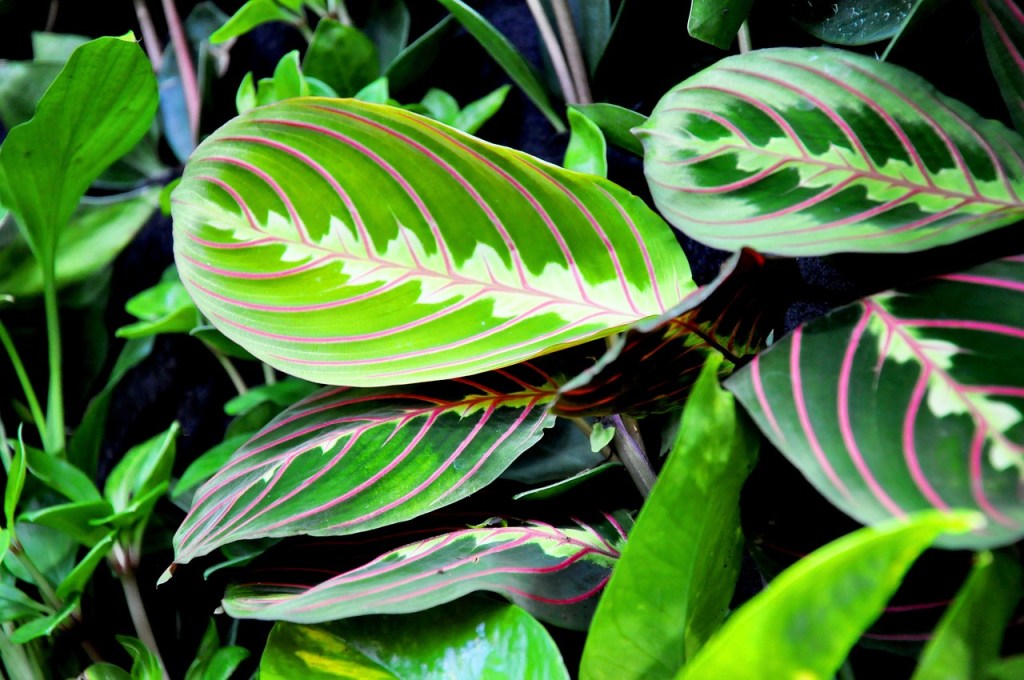
For pet owners: Maranta prayer plant
Prayer plants have a reputation for demanding high humidity and attracting pests. As a genus, maranta plants tend to be less finicky while still displaying the fascinating folding and unfolding movements that prayer plants flaunt. The maranta leuconeura, or herringbone plant, is an attractive prayer plant with satiny green leaves and red-ribbed veins. It’s completely nontoxic for dogs and cats, making it ideal for pet owners.
Marantas like medium, indirect light, and room temperature. They appreciate moist soil and humid air but tend to be resilient when faced with drier periods. Feed them twice a month with diluted liquid houseplant food during active growth periods — a happy maranta will shoot out small white blooms in the spring and summer. If you notice faded, crisping leaves, keep your plant in a shadier area and amp up the humidity.
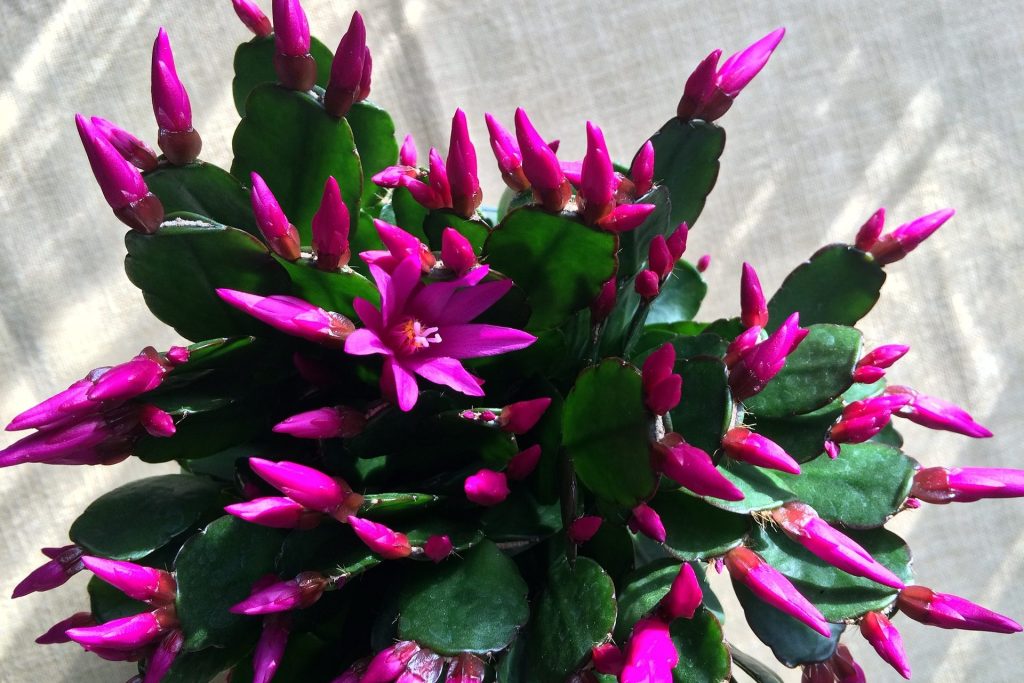
For cacti lovers: Christmas cactus
Yes, the Christmas cactus, or schlumbergera truncata, is technically one of many tropical flowering plants that hail from Brazilian forests. Unlike most succulents and cacti native to arid deserts, the schlumbergera appreciates humidity and moisture. Consisting of bristled, waxy leaves that trail, it’s called a Christmas cactus because of its bright flowers during the holiday season. The Christmas cactus will bloom in cold temperatures and long periods of darkness during winter. It appreciates moderate watering, room temperature, and partial shade.
Cactus lovers may also enjoy hoyas and snake plants. While these aren’t succulents, they’re hardy and do not have intensive watering needs. They appreciate bright, indirect light but will also fare well in medium light conditions. Hoyas, in particular, develop waxy, fragrant blooms.
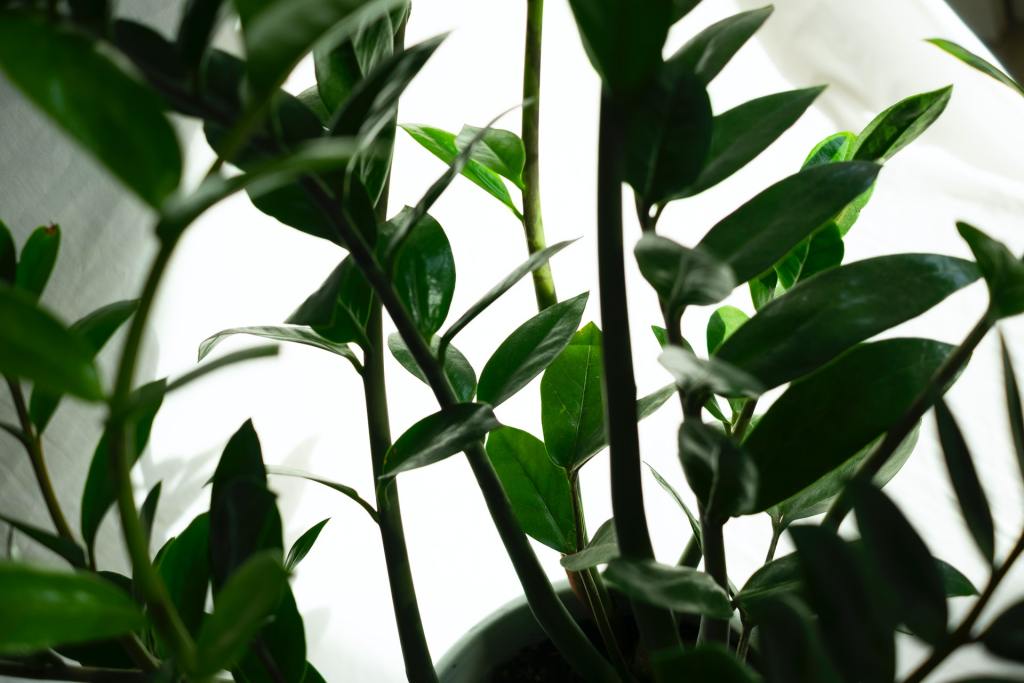
For busy people: ZZ plant
Zamioculcas zamiifolia is a tropical perennial from eastern Africa. It thrives on being ignored, so it’s the perfect plant for people who don’t have much time. ZZ plants are notoriously easy-care houseplants. They can tolerate low levels of light and only need to be watered once a month. Their glossy, dark green leaves grow on stems connected to bulbous rhizomes that might ooze if you overwater. ZZ plants generally don’t need fertilization. They grow in spurts and occasionally develop white spathe flowers.
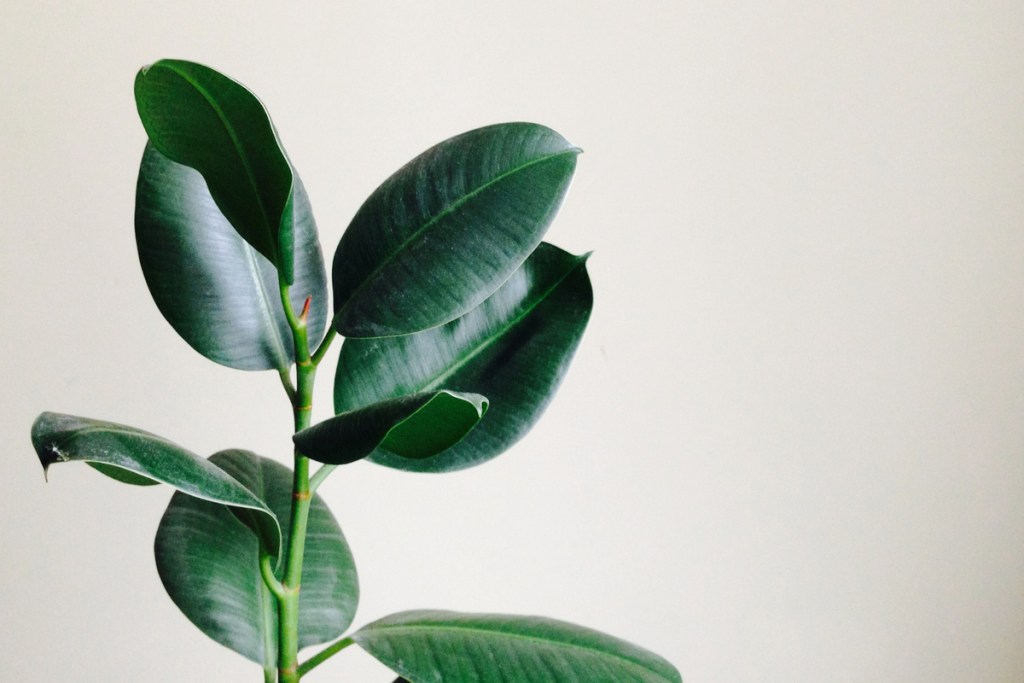
For minimalists: Rubber plant
From monstera to snake plants, many tropical houseplants could work for a minimalist aesthetic. Ficus elastica burgundy, or the rubber plant, is our top choice because of its glossy, dark green leaves that make a sleek statement. It only requires moderate watering every two to three weeks and does well in medium light. During the growing season, feed it balanced and diluted liquid fertilizer every month. If you like variegation, check out the ficus elastica “Tineke” with cream edges or the ficus elastica ruby with pink-tinged foliage. Rubber plants tolerate a range of temperatures, but conditions beneath 50 degrees Fahrenheit. cause leaves to fall.
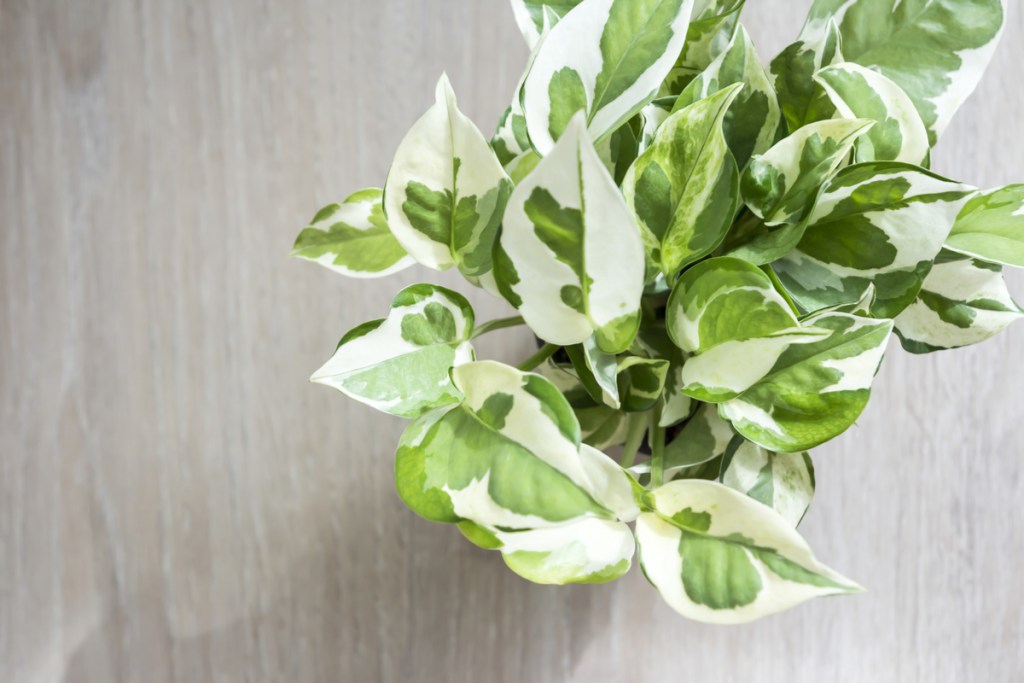
For those on a budget: Pothos
Pothos are common low-maintenance tropical plants that can usually be found at garden centers and supermarkets for under $15. Find pothos in many varieties: Golden, marble queen, and neon are just a few. They have waxy, heart-shaped leaves that can trail and climb. Easy to maintain, pothos plants appreciate indirect bright light but can tolerate low light. You only need to water them when the soil dries out — the leaves curl when this happens. During spring and summer, feed them diluted fertilizer every two weeks. They should stay happy as long as you keep them in room temperature conditions.
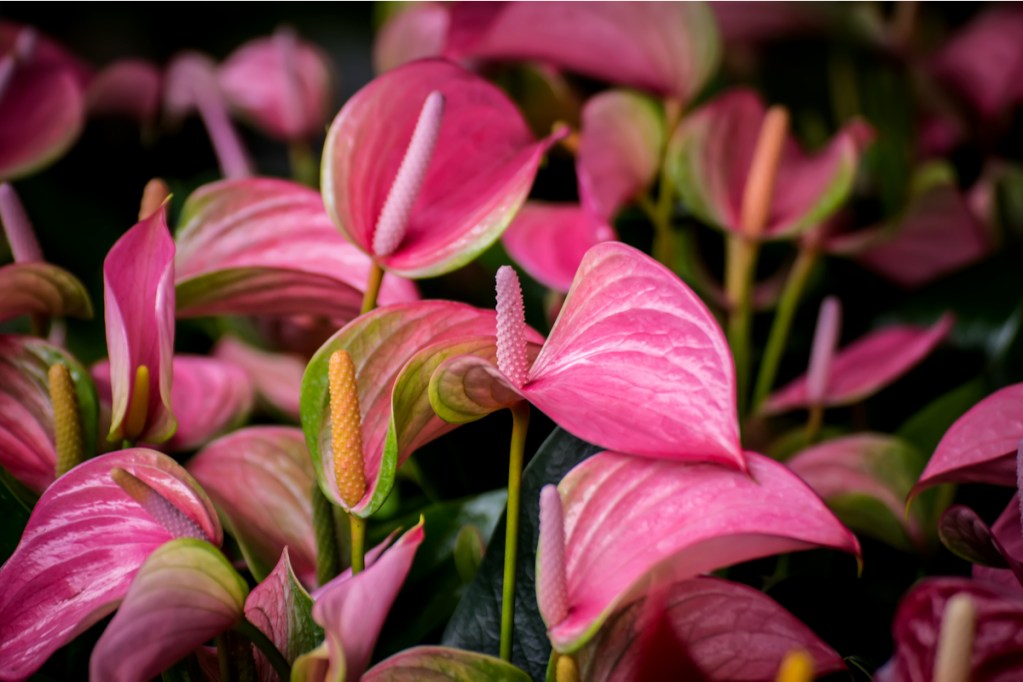
For flower lovers: Anthurium
Anthuriums are the perfect tropical houseplant for lovers of beautiful flowers. They are most commonly found in shades of red and pink, but there are varieties of anthurium with flowers in nearly every color. You can find anthuriums in most nurseries and garden stores. In addition to anthurium, they are also called laceleaf and flamingo flowers. These hardy tropical plants are an excellent choice for beginners, as all they need is rich potting soil and plenty of water.
They do best when kept in a warm, humid area with bright, indirect light. If you have space for them, anthurium make great bathroom plants. They are toxic to pets and people, so it’s important to keep them away from any curious critters that might be interested in chewing on it. In addition to soil, you can grow anthuriums in water for a unique and fun display.
With a little research and care, you’ll find a tropical plant that will thrive in your home. Though they might seem intimidating to houseplant novices, these plants will reward you with lush and splashy foliage once you’re in tune with their needs.
